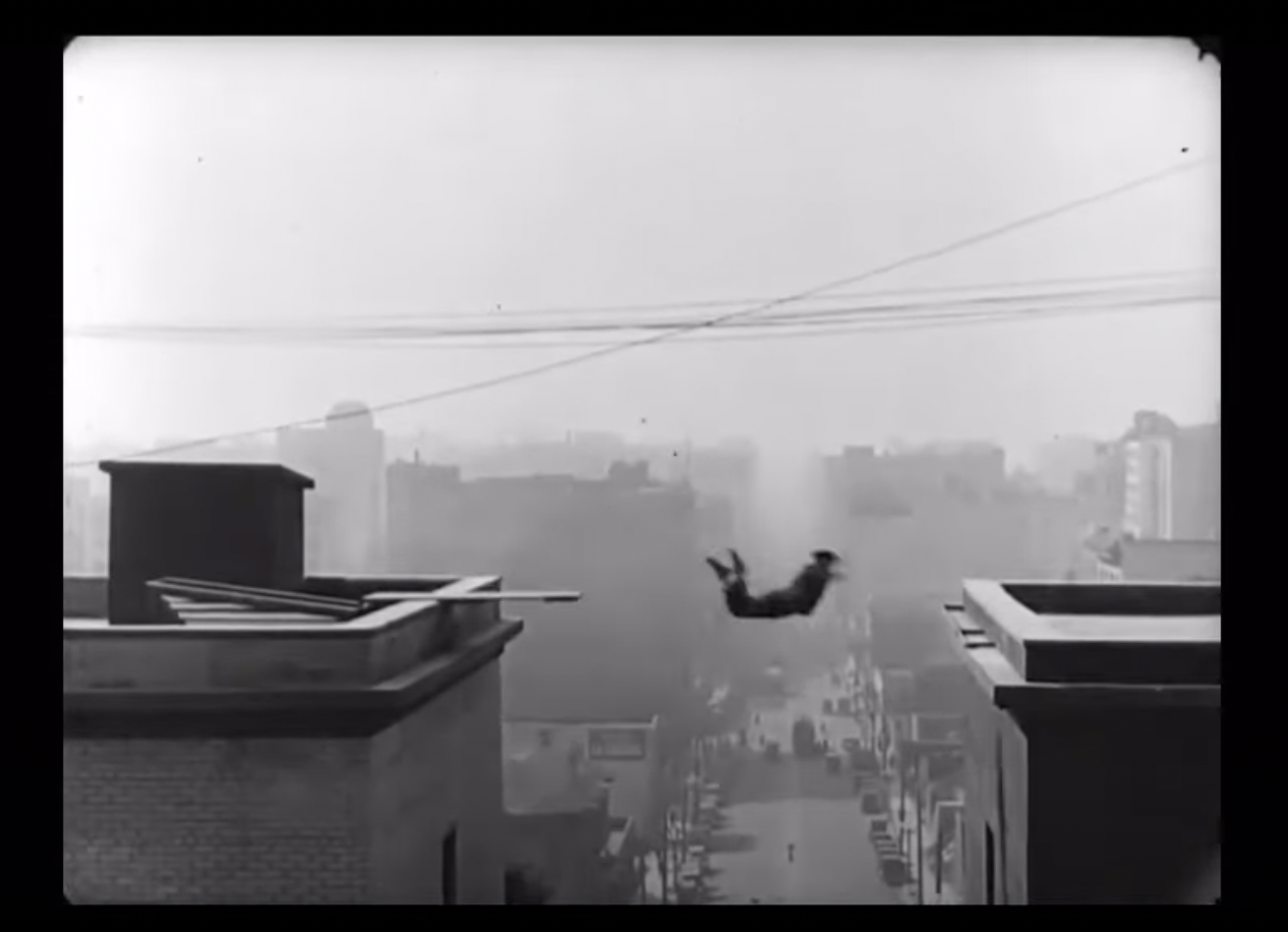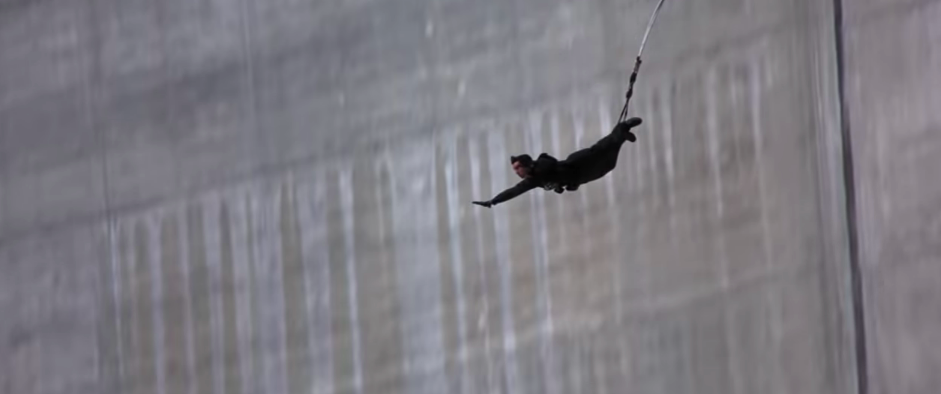Oscars 2024: And the Award for Best Publicity Stunt Goes to…
Lauren Steimer / University of South Carolina

At the 2024 Academy Awards, Ryan Gosling and Emily Blunt presented a segment on Hollywood stunt work, which included a video montage featuring a voice-over on the history of these seemingly dangerous spectacles. These two actors were selected because of their roles in the upcoming film, The Fall Guy (David Leitch, 2024), a reimagining of the eponymous 1980s television series. The segment was produced not simply for marketing purposes for the film itself but also because the stunt industry has been lobbying for its own Oscar for decades. In recent years, their efforts have garnered much more attention. The director of The Fall Guy, David Leitch, was a stuntman and stunt coordinator before he began directing action features and has been a prominent voice in the fight for Academy recognition of stunt work. He recently made an impassioned argument that “[stunt performers] are sort of the ninjas of the movie business. We create the magic but get none of the credit. Maybe that’s where it’s always going to be, but I hope not. I hope that our voices are heard, and we start to get recognized” (Coggan). The tribute video and introduction by Blunt and Gosling demonstrated that the contributions of stunt workers are worthy of appreciation while couching the argument in the more recognizable Academy discourses on art, directors, and Hollywood history. The choice to have stars—one of whom is acting as a stuntman in The Fall Guy—speak about the validity and valor of stunt work as a cinematic art form is tactical, but it is also discursive erasure. Blunt and Gosling are more recognizable to audiences; however, in selecting them to deliver it, the tribute reinforces the recognition of actors over the stunt workers who work as their doubles.
The video opens with a voice-over from Gosling stating, “Chaplin, Lloyd, Keaton, cinema’s first directors were all stuntmen in their own right, and action was the lifeblood of their story. The Academy’s history runs deep with the incredible work of the fearless artisans of the stunt community, and every awards season features their work in every genre.” The work of nameless, faceless stunt performers is matched to shots of prominent actors, including Sigourney Weaver, Cary Grant, and Michelle Yeoh, followed by shots of hordes of stunt ensembles in battle.
First and foremost, the tribute operates as a promotional segment for the argument that stunt workers (doubles, coordinators, teams, etc.) deserve industry recognition and, in doing so, makes connections to Hollywood heritage and action design as an art form. While the tribute video opens with a behind-the-scenes clip of action being directed, it quickly pivots to scenes from contemporary action films and then to stunts performed by Charlie Chaplin, Harold Lloyd, and Buster Keaton. Through dynamic images, the visual sequence emphasizes these three stars’ work as actors and stunt performers. Still, the voice-over reorients the listener to the careers of each of these men as directors.
The decision to open the tribute by featuring early cinema stunting stars who worked as directors is intentional because the stunt community knows that, given the tight runtime for the Academy Awards, if they finally get recognition, only one award will be presented. The push comes from Leitch and others for a “Best Stunt” category. Still, it is unclear yet whether that will mean an award for a stunt coordinator/action designer (i.e., the stunt director), a stunt ensemble, or an individual stunt performer. On a film set, a stunt coordinator or action designer choreographs and directs the action on screen in consultation with the Second Unit Director.
One might assume that an Oscar for stunt coordinators is the agreed-upon priority of the stunt community at large, akin to a “Best Director” category for stunts. That would be inaccurate as only a few community members become coordinators, and that subfield lacks diversity. Most stunt performers do utility stunts, double for actors, and work with large ensemble stunt teams. There is no consensus on what a Best Stunt category would mean and who might be handed the award and given a chance to speak.
The montage also features the best work of an individual stunt performer and includes several stunts from prominent members of the global stunt community. In one clip, stuntman Diz Sharpe acts as a cameraman for The Bourne Ultimatum (Paul Greengrass, 2007) and follows David Leitch (doubling Matt Damon) as he jumps off a rooftop and through an adjacent window.
In another, British stuntman Wayne Michaels’ plummets 220 meters (about 721.78 ft) down the Verzasca Dam in a bungee jump while doubling Pierce Brosnan for one of the opening scenes of Goldeneye (Martin Campbell, 1995).

One of the most iconic stunts featured in the montage is an homage to stuntman Yakima Canutt’s coach drag in John Ford’s 1939 Stagecoach, often considered the greatest Hollywood stunt of its era (See: Shields).
In this clip featured in the Oscar stunts tribute video, Terry Leonard doubles Harrison Ford in Raiders of the Lost Ark (Stephen Spielberg, 1981). He mounts the front of the moving truck, falls below, is dragged behind the truck, and climbs back into the rear of the vehicle, all while the truck is still in motion.
Other than the aforementioned early cinema stunting stars, no stunt workers are named by the voice-over. The primary emphases of the tribute/promotional video are on coordinators/action designers as artists and collective large-scale stunt teams as skilled professionals. It is most unlikely that an individual stunt performer award category will be selected by the Academy because to do so would ruin the industry-marketed illusion that actors do their own stunts. Actors do not. Even when they say otherwise, it is mostly just bluster, bravado, and self-deception.
The competition for a new Oscar category is steep as most industry professionals are not recognized by the small number of categories presented in the awards show. This year, the Academy decided to include a “Best Casting” category, which will be included in the ceremony in 2026. The tribute to stunt performers was more than simply a filler segment or a sign of gratitude to the workers who risk their lives for movies. The segment, including the video and introduction, which lasted over two and a half minutes, demonstrated that there is room in the show for one more award. The function of the piece was not so much to win over the television audience; it was to lobby directly to Academy members utilizing sympathy and guilt (as these workers risk their lives for cinema and certain Academy members), a romanticized attachment to early cinema stars (who often did many of their own stunts because the industry didn’t care to protect them or pay for doubles before the birth of the Screen Actors Guild), and most importantly, the tacit agreement that stunts are the work of aesthetically-minded stunt coordinators or large teams, but never individual named stunt doubles (who could blow one of Hollywood’s biggest secrets).
Image Credits:
- Three Ages (1923) Stunt Depicted in Oscars Tribute (Editor’s screenshot)
- Oscars Stunt Tribute 2024
- Stuntman Diz Sharpe in The Bourne Ultimatum (2007)
- Stuntman Wayne Michaels in Goldeneye (1995)
- Here the original stunt is analyzed in great detail on Behind The Stunts
- Terry Leonard falls under the truck, is dragged, and recovers seemingly with ease
Devan Coggan, “Oscars honor stunt community amid calls for a Best Stunts category,” Entertainment Weekly, March 11, 2024: https://ew.com/ryan-gosling-emily-blunt-oscars-2024-honor-stunt-performers-8607033
Meg Shields, “How They Shot the Carriage Drag Stunt in John Ford’s Stagecoach,” Film School Rejects, December 2nd, 2021: https://filmschoolrejects.com/stagecoach-drag-stunt/
How great Lauren! You have earned it for your great work!